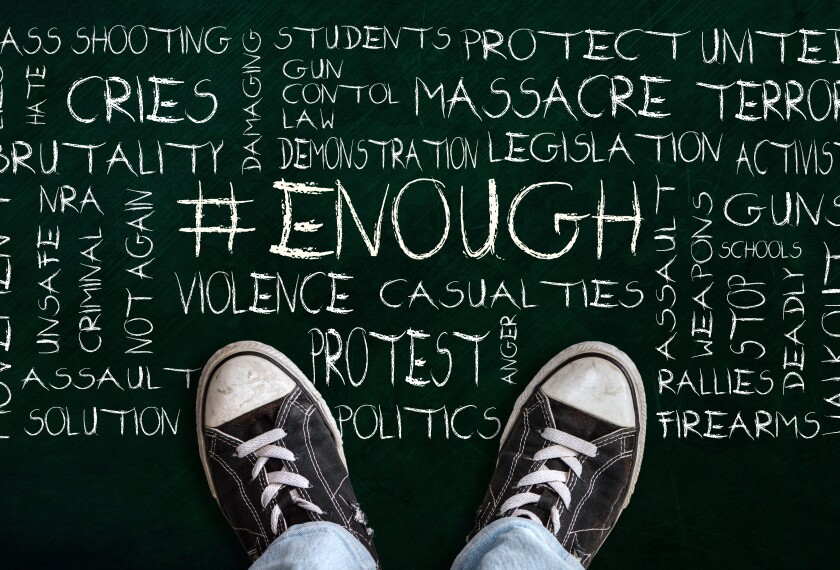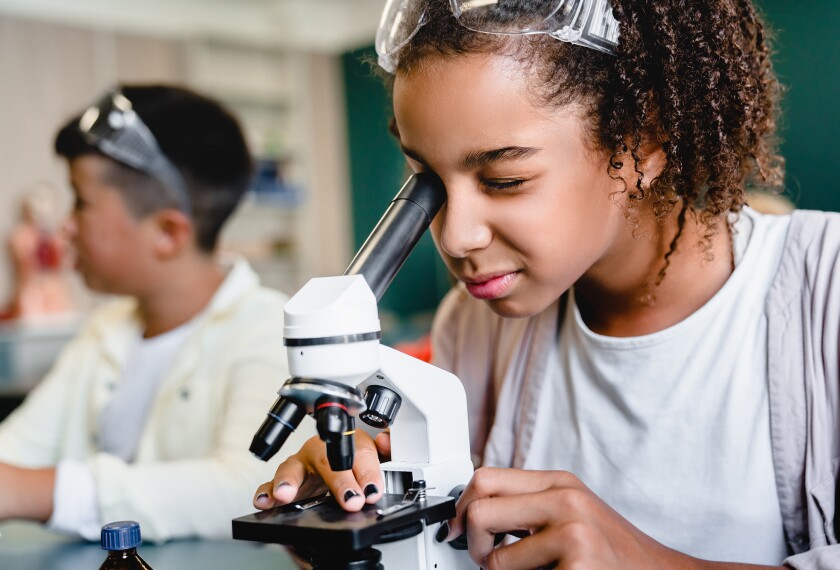Imagine a society that loved its future so much that they enabled students to create it.
Humans have never had a higher percentage of its young people conscious that the future of the world is precarious—some people may think it’s even on the brink of calamity. When polarization and disconnections reach extreme levels only one of two things will happen: continuation over the edge to oblivion or an enhancement-based reversal that results in a radically better solution. The decades from 2020 to 2050 will be the battleground for the next period of civilization for our 8 billion people, and all living things.
In our deep learning work, we see six interacting reasons why our young people should be seen as changemakers of the future:
1. Young people have the most at stake.
Our organization, the New Pedagogies for Deep Learning, have data that show that at least 65 percent of kids overall are bored or alienated. What happens when people feel alienated? It contributes to a higher level of anxiety and depression. If we include adults, I think it is safe to say that pretty much everyone is worried about the future. The notion of civilizations is lofty (and John Maynard Keynes did say that in the long run we are all dead) but if anyone has longer-term legitimacy it has to be the very young who are likely going to live 100 years if we don’t destroy ourselves sooner.
In a sense, the young can afford to think short and long term. No matter how you cut it, it seems preposterous that we would omit as players those who have the most energy, the most long-term interests, potentially the best ideas, and as yet undiscovered (and undeveloped) evolutionary qualities (in terms of genetics, culture, and consciousness).
If we are interested in the future—short or long—it is impossible to have any chance of success without inviting the kids—all kids—to help lead the way. The other five reasons add fuel that could make this proposition—students as changemakers—a growing reality.
2. Kids have an evolutionary instinct to take action.
Students born since 2000 are different. No other generation has experienced as much fantastic technology, bombardment of innovation, ravages of a pandemic, awareness and immediacy of the planet and the universe, and uncertain and aimless futures. Advances in neuroscience and day-to-day interaction show us that all young people from womb onward are showing signs of disturbance, and as they get conscious and can express themselves from age two if not before. There is rapidly mounting evidence that more and more kids:
- Yearn to belong
- Seek purpose and meaning
- Desire better futures for themselves and for the world.
- Have good ideas and want to link with others to find solutions.
- Want more contact with adults in pursuit of new scenarios.
- Have the interest and capacity to improve the world.
- Have short- and long-term (well into the future) interests.
- Are ever anxious about themselves, those they care for, and the planet itself.
Unfortunately, they live in a world where we left the kids out. The most ambitious and resourceful young people do end runs around the present system thereby lessening chances that the current system will change. At the same time we fail to help kids who are stuck—a double loss because those trapped in the current system, when cultivated, have some of the best ideas about what should be changed. Under these conditions, access and mechanisms to work with students in transforming the system lay idle.
3. The best directional solutions are becoming known.
New breakthrough research and practice, that has been conducted in the past 10 years within existing systems, are providing scores of ideas and examples about how to change what we have, to what we should want. So far, we and others have been able to do this within the parameters of current systems. The good news is that under relentless pressure very bad systems cannot suppress very good ideas. Eventually some at the top begin to entertain and may even sponsor radical new directions.
Our theory of action is to take good ideas, team up with skilled and willing practitioners at the bottom and middle (schools, communities, districts) and begin developing potentially great futures. Sooner than later, we seek to attract the attention, support, and good ideas of those at top. Beyond us there are many others working in this same direction, but not yet enough to break and remake the current system. In short, more and more people and segments of systems around the world have not waited for policy change. They have decided to become masters of their own fate, not waiting for the system to act.
Hyperconnectivity has flattened the world and created the possibility of greater and more intimate relationships. Under negative conditions this can accelerate destruction, but if associated with the factors outlined in this note enormous possibilities of influence, action and change are probable. All of this is to say that a massive effort on student as changemakers can be the revolutionary catalyst for new system integration. This is by far our best bet for rappelling to future landscapes never before experienced.
4. Too many children are now “lost.”
Aside from plagues, child labor, poor medical knowledge, and the like, never before have humans been literally squandering the future of its youth, and thus the evolution of society. Increased anxiety, drugs, trapped circumstances, poor diet and malnutrition, and violence are all taking increased tolls on children and youth. The profile of increased numbers of mass killers is becoming all too vivid: loners living lives of stark isolation until annihilation sets in.
We need a seismic shift in creating a sense of belonging, and agency for all students and their families. We need ‘contextual literacy’—how teachers and other staff can understand and support students and their families starting with their current living conditions.
Working together, students as changemakers can dramatically reduce the number of seemingly “lost causes.” Changemakers support and develop each other. New school developments integrated with community and societal support can create momentum that catalyzes ever increasing positive forces—as long as the young are at the center of action. We may find that some of the most creative solutions for the world arise from former lost youth whom have been helped to find their way to a better future.
But there is a problem. Westerns societies have a bad cultural habit of talking over/at/about kids without ever really listening to them. Student voice, which can easily unwittingly be superficial, is not the solution. In power-based relations those with more authority really have to trust the process, listen and receive the gift of different ideas that young people have as we work with them to change the culture of well-being and learning.
Changemakers are not isolated. They know that any solutions have to be owned by the group. Young individuals and groups, working equally with adults will problem-solve—and will have a vested interest in having good ideas stick. More and more of the best directional solutions can be accessed and acted upon. We have to give kids the opportunity and experience to get better at this transformational work. There is no better way to learn.
5. We could be making better investments.
In the race between technology and education, we know that the latter had the edge for the decades after World War II. Since about 1980 the reverse is true. As I argued in my 2021 “The Right Drivers for Whole System Success” paper, the “bloodless paradigm” of big business has swamped the “humanity paradigm.” Irony of ironies, young people are the best technologists around!
It would not take much to tweak the agenda. Students as changemakers armed with technology could run the table in a way that the net benefit to society would be enormous. Not the least because you don’t have to pay students to do the right thing, but also because students, with teachers and others, and with ever new technologies are and will produce more effective and cheaper solutions (with respect to food, shelter, climate, social and business entrepreneurship, etc., etc., etc.).
In the model I am portraying, resources abound because wasted money is reclaimed, new resources are attracted, and more and more people join. This movement would represent a social gold rush—frenzied spirit work. This outcome is not automatic. But neither is it a pipe dream. If you believe that business and youth could have common ground for a better society this very domain and the other five elements surrounding it in this note is the very best investment you could make.
6. Discovering and developing unimaginable better futures makes life worth living.
There are physical limitations to where technology, physics and science can go. In the 2017 The Origins of Creativity, the evolutionary biologist E.O. Wilson notes that “science owns the warrant to explore everything factual … the humanities borne aloft by both past and fantasy have the power of everything … conceivable.”
In terms of evolutionary forces, there are no theoretical limits to where our minds can take us because they are fueled by unknown new genetics, cultures, consciousness and related actions. The very young have a special place in the world of make believe. We may find common fare with children from many different origins. Our Indigenous colleague, ceremonial leader Kahontakwas Diane Longboat, describes recent attention to the powers of some of the very young (age 0-10) whose gifts are emerging that could bring profound change to bettering the world: “The children will bring the medicine home to the family.” Kids embody hope. Let’s invest in “learned hopefulness” with them, learning from different cultures for a better future.
Pure fantasy or unimaginable dynamics of future civilizations? To find out adults have to listen to children and youth more deeply and longer than ever before. This change in the institutional cultures of well-being and learning with kids as full-fledged partners is our best bet for a flourishing future.
Foundational to future civilizations? Go figure!





